I am a student from the University of Glasgow’s Dress and Textile Histories MLitt programme, and from January to April 2017 I have undertaken a work placement examining some of the South East Asian textiles in National Museums Scotland’s collection.
This has focused on a collection of textiles of the Akha, who live in the mountainous regions of northern Myanmar, Thailand, Laos, Vietnam and China (Yunnan Province). National Museums Scotland purchased the collection in 1984 from Scottish missionary May Wilson. As part of this research, comparative material from parts of Burma and the surrounding areas of northern Thailand and Laos have also been looked at. You can find out more about the project here.
The project started life from a photo album belonging to May Wilson, which was part of the purchase. The album contains a series of images Wilson collated whilst living and working with the Akha people as a missionary as part of the Overseas Missionary Fellowship (formerly the China Inland Mission) in the mid-1970s to early 1980s. The album consists of 26 pages of a variety of black and white and colour images depicting the day to day lives of the Akha and the beginnings of missionary work in the region.
Significantly, the album is a highly valuable supplementary source to look at when researching the costume of the Akha. Part of my work at the museum included scanning the photo album to enable digital photographs to be uploaded as part of an online catalogue. The photograph album was assigned a display number and is now accessible on the museum’s online database.
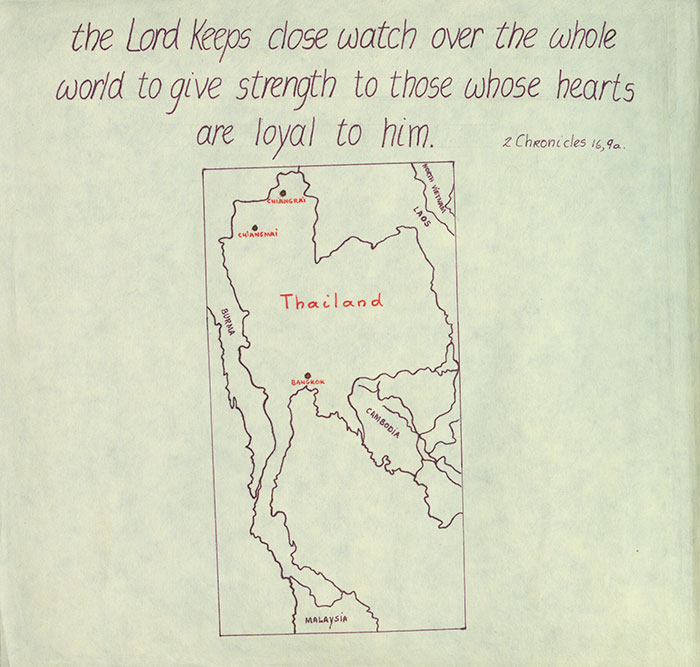
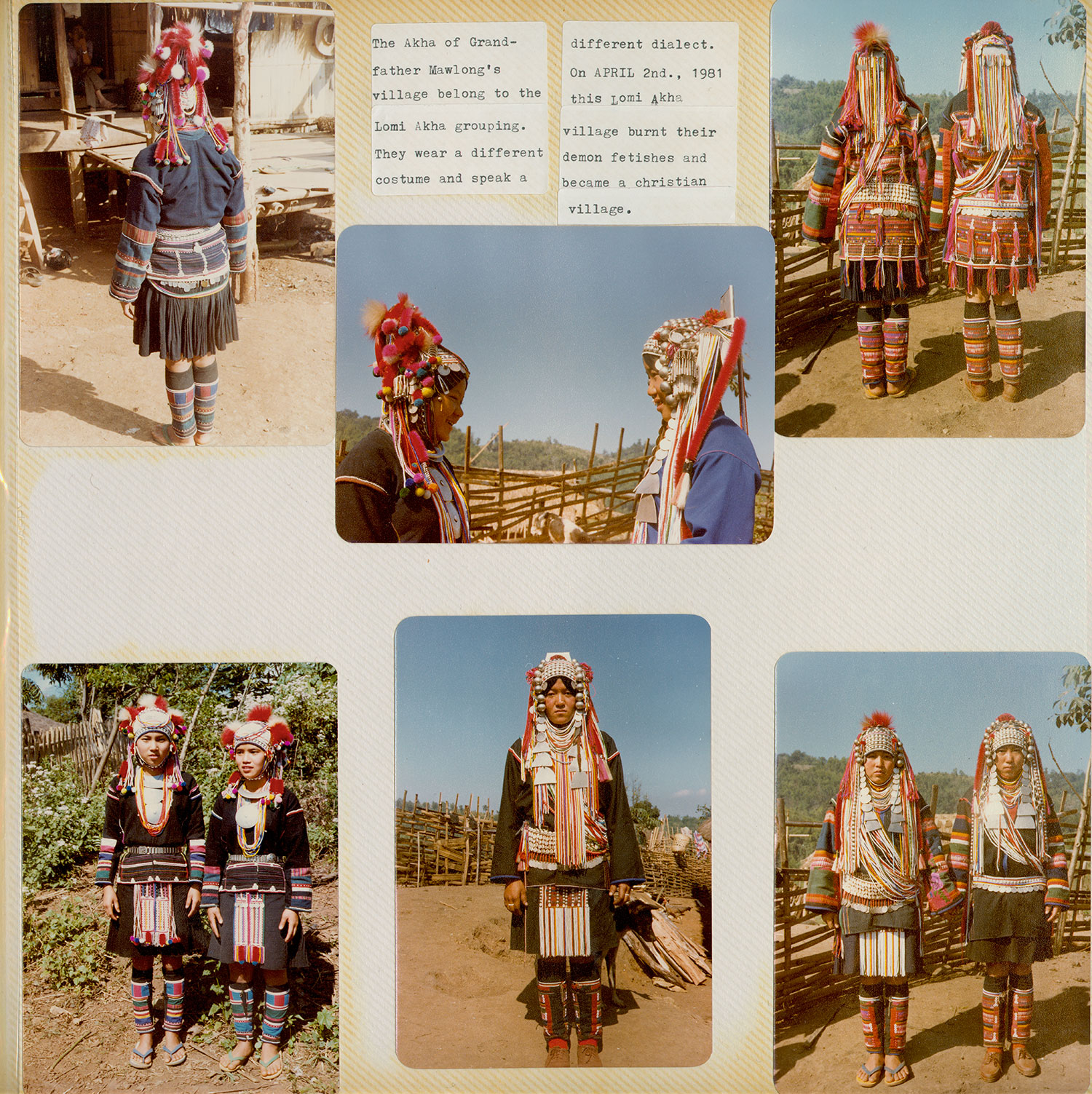
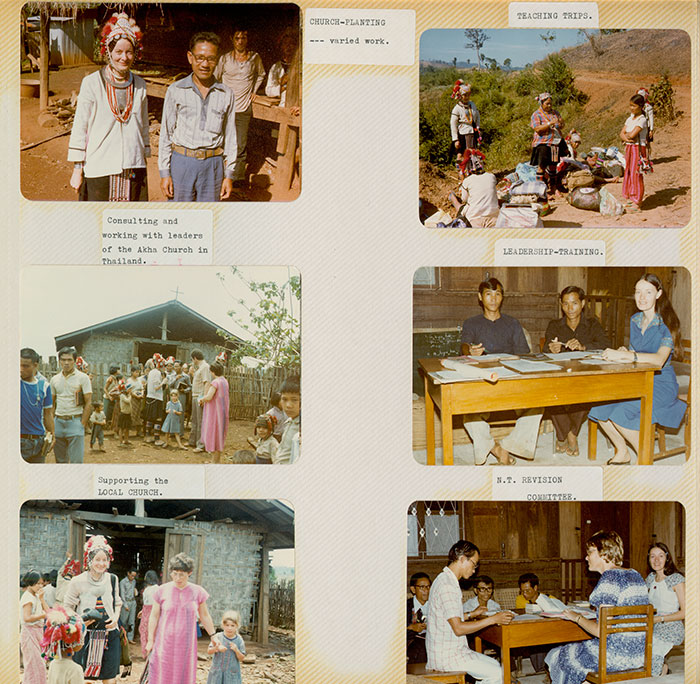
Studying the photograph album offered further insight into the costume of the Akha people. There were striking contrasts between traditional Akha costume and western style clothing such as T-shirts and jeans. Interestingly, there were many photos that showed a mixture of both, with traditional Akha textiles being worn with western clothing. Moreover, in contrast, there are a number of images of May Wilson wearing Akha clothing, such as the woman’s headdress pictured below, and it is likely that this clothing forms the collection of textiles.
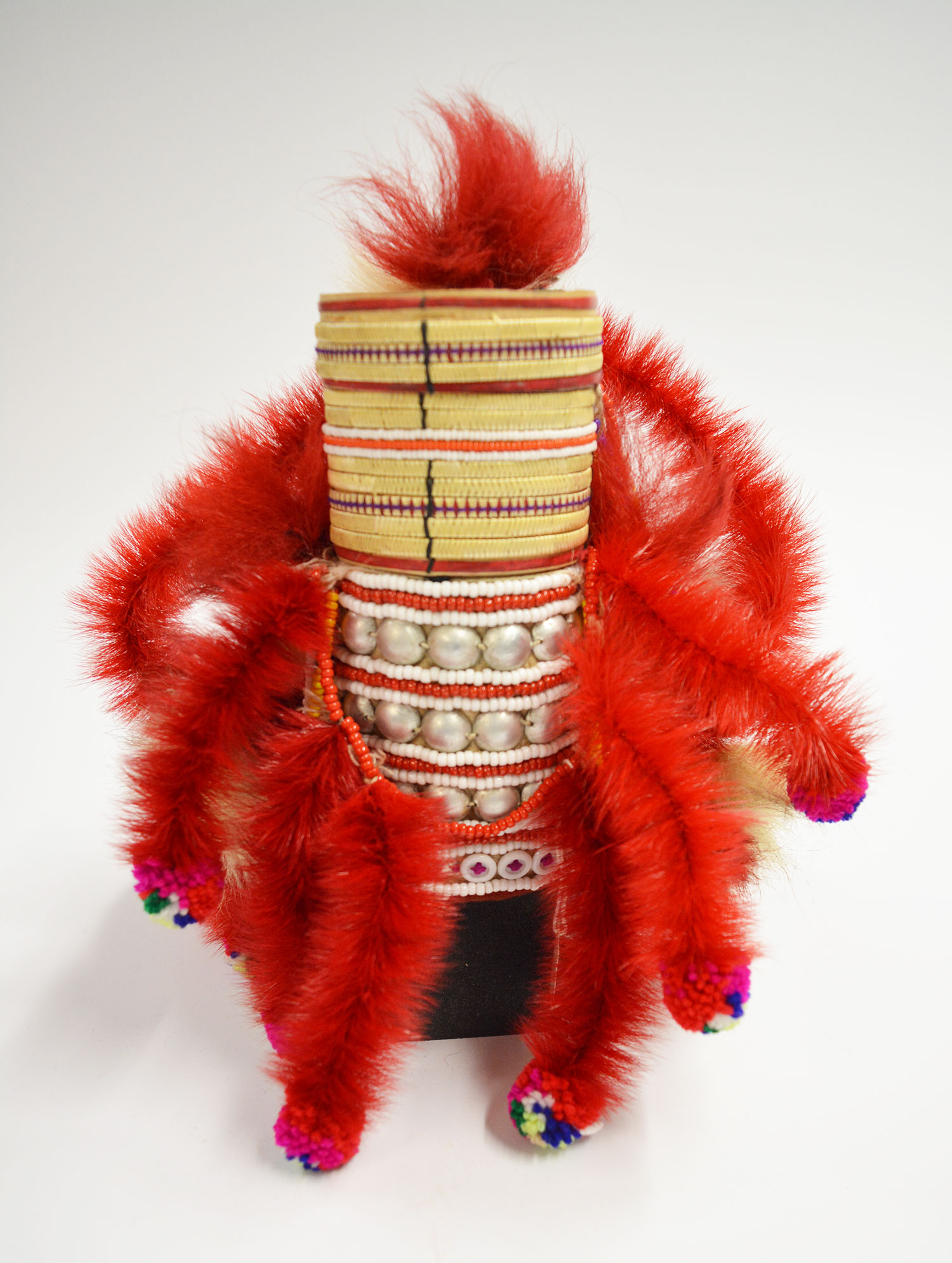
Akha women are identified by these tall, colourful headdresses, which are ornately decorated with gibbon fur, pom-poms, feathers, coloured beading and silver and metal coins and discs. The height and design of these headpieces differs according to their age and marital status. There was one example of a headdress in the collection that was in keeping with traditional design and materials.
Working alongside Rosanna Nicolson, Assistant Curator, Middle East and South Asia, was a dual learning experience, in that besides physically handling and recording the textiles, I was also researching and cataloguing them. Here, I was able to experience two sides to working in a museum and the different sets of skills that are required for both. This made working on the placement not only more enjoyable but beneficial for my ambition to work in the museum and heritage sector. In particular, the opportunity to handle the textiles themselves was fascinating and a highlight of my work. In the National Museums Collection Centre I learnt how to remove textiles from storage as well as seeing the different ways in which textiles are stored.
Work began on May Wilson’s collection of clothing and accessories from the Akha people. I helped photograph, measure and label them, all tasks I had no previous experience of.
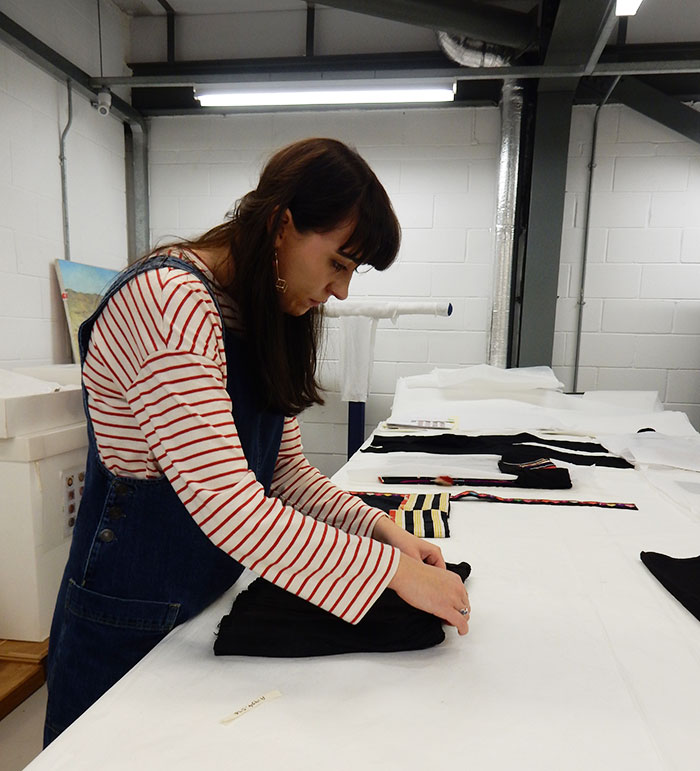
Looking at the textiles in person enabled us to match the pieces with photographs in the album, showing us how the clothes were worn together as an outfit. We noted details such as how high leggings were worn on the leg and how the jackets and skirts were tied and fastened.
Furthermore, the album visually presented the process of weaving, depicting the looms on which Akha women worked, using a distinctive foot treadle loom. In the late 1970s and early 1980s, the Akha wove a lot of their own textiles, growing most of their own cotton which they spun by hand, although some was bought from Thailand. Many Akha women were responsible for producing these textiles, which they later dyed before it was made into clothing. The distinct indigo dye in these textiles characterises the Akha’s dress and is particularly striking in contrast to other South East Asian textiles. For the Akha, the memory of wearing a new outfit was characterised by the smell that came from this indigo dye, along with the stiffness of the cloth.
Most of the clothing in the collection is women’s costume, consisting of a long-sleeved jacket, a short kilt-like hipster skirt, a sash and leggings. Men wore a similar jacket with loose trousers and both used decorative shoulder bags. The dark indigo cloth is embellished with brightly coloured beading and coloured squares of applique highlighted with seeds and silver bosses. Notably the costume in the collection is specific to a branch of the highland group called the Lomi-Akha. There are subtle variations and differences between the styles of Akha dress that reflect their geographical heritage – the Lomi-Akha style is named after a large mountain in Myanmar (Burma) from which many Akha derive.
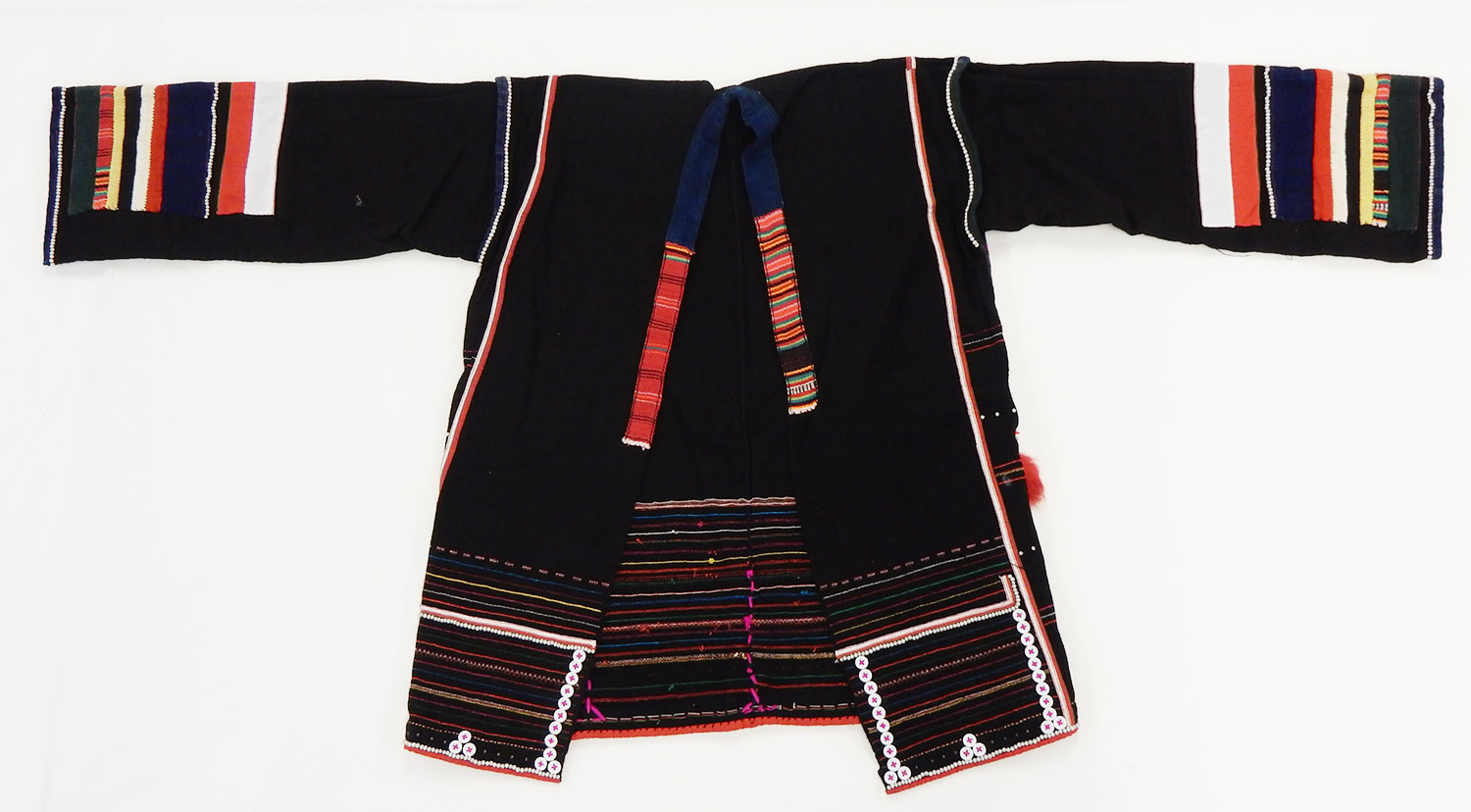
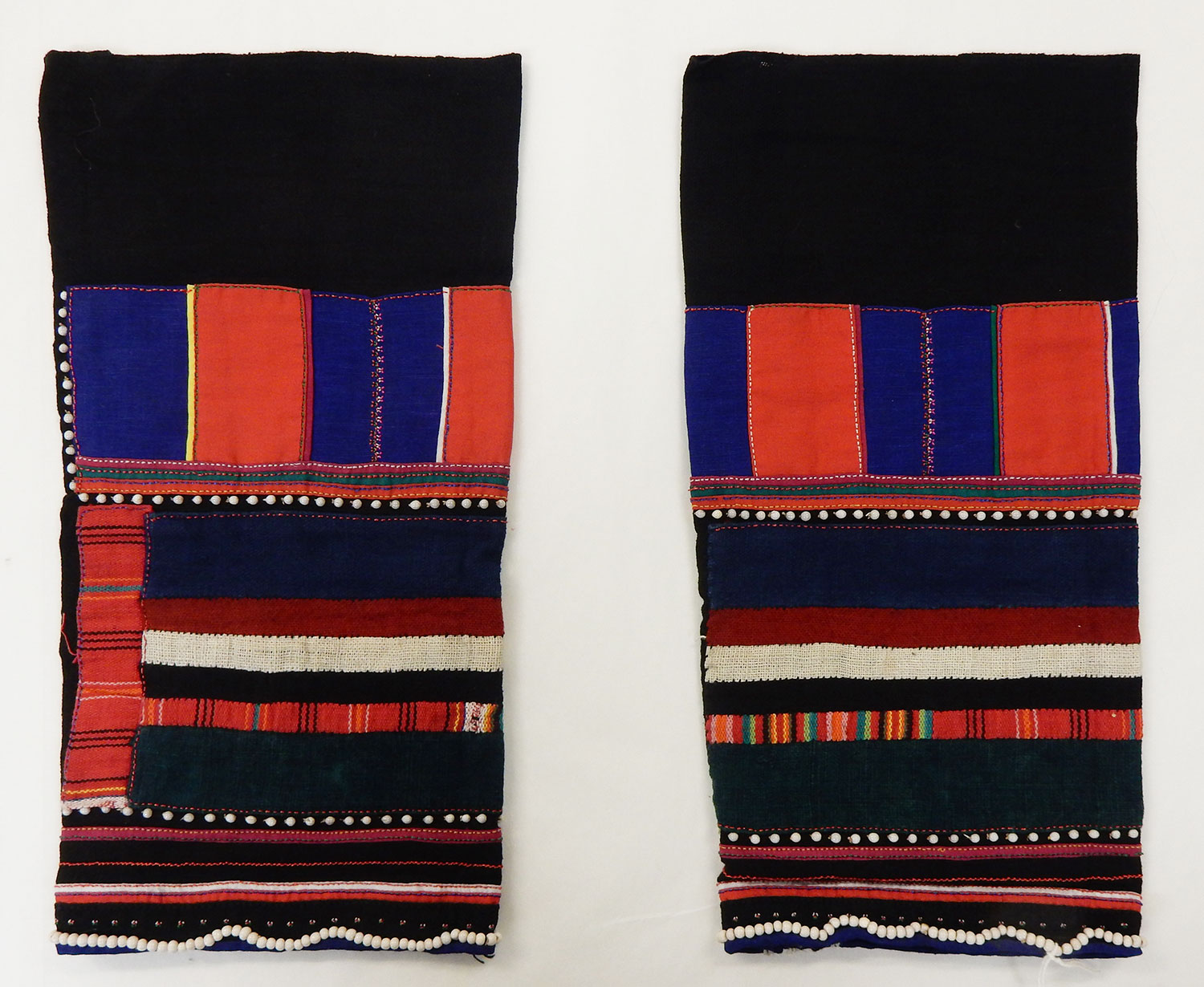
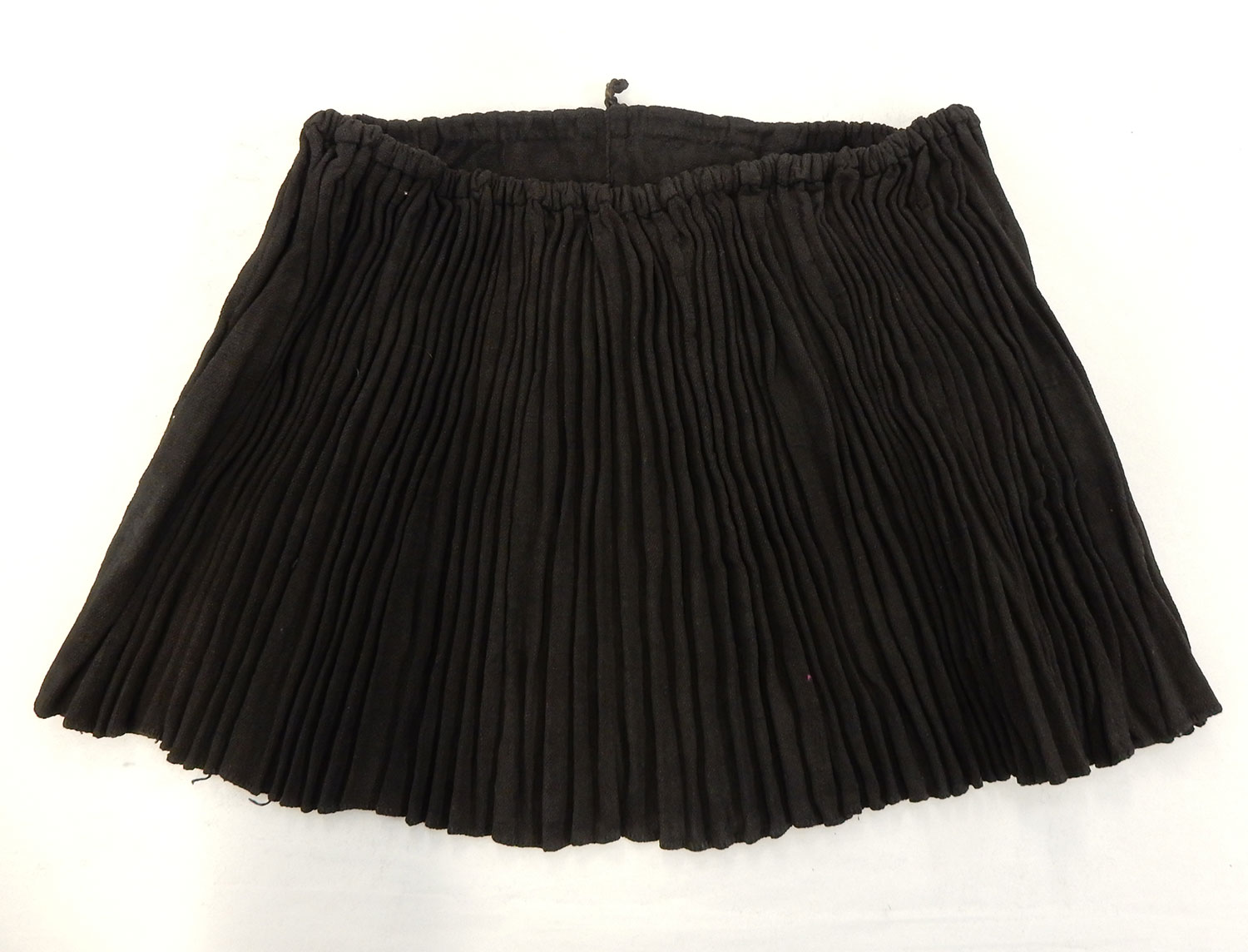
Due to the migration and movement of the Akha as a highland people, it was useful to make comparisons between the collection of Akha textiles and other South East Asian textiles in the museum. In doing so we unearthed some Thai textiles from the Yao people, which also required new labels to be sewn on and recorded.
By searching through the museum stores I gained a new experience of museum practice; one that enabled me to broaden my outlook and understanding on the organisation of material in museums, and particularly how textiles are stored. This experience also taught me about some objects’ loan history, considering how and why objects come into the museum’s possession and learning how to trace that. Some collectors were missionaries like May Wilson but others were collecting through personal expeditions to Thailand or through work overseas.
Through collating photographs and records of other Thai and Burmese textiles, the similarities in the spread and use of design across these textile cultures became clear. In particular, the form, style and shape of the clothing had many cross-overs. Head shawls, veils and skirt wraps are common throughout the Burmese and Thai cultural groups. Still, it is subtle differences in the pattern, colouring and material of the separate Thai groups that highlights the complexity in defining the origins of these design motifs.
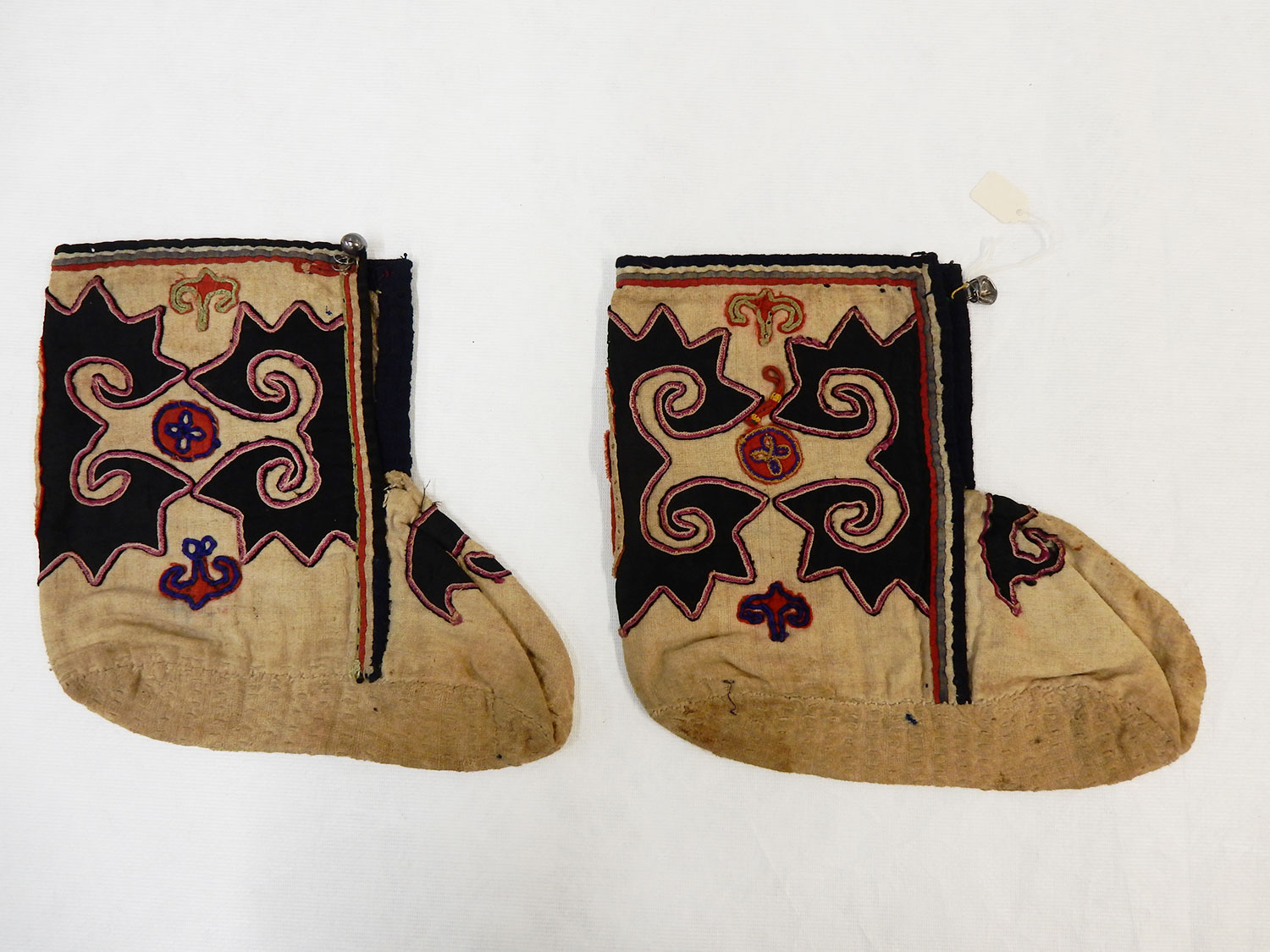
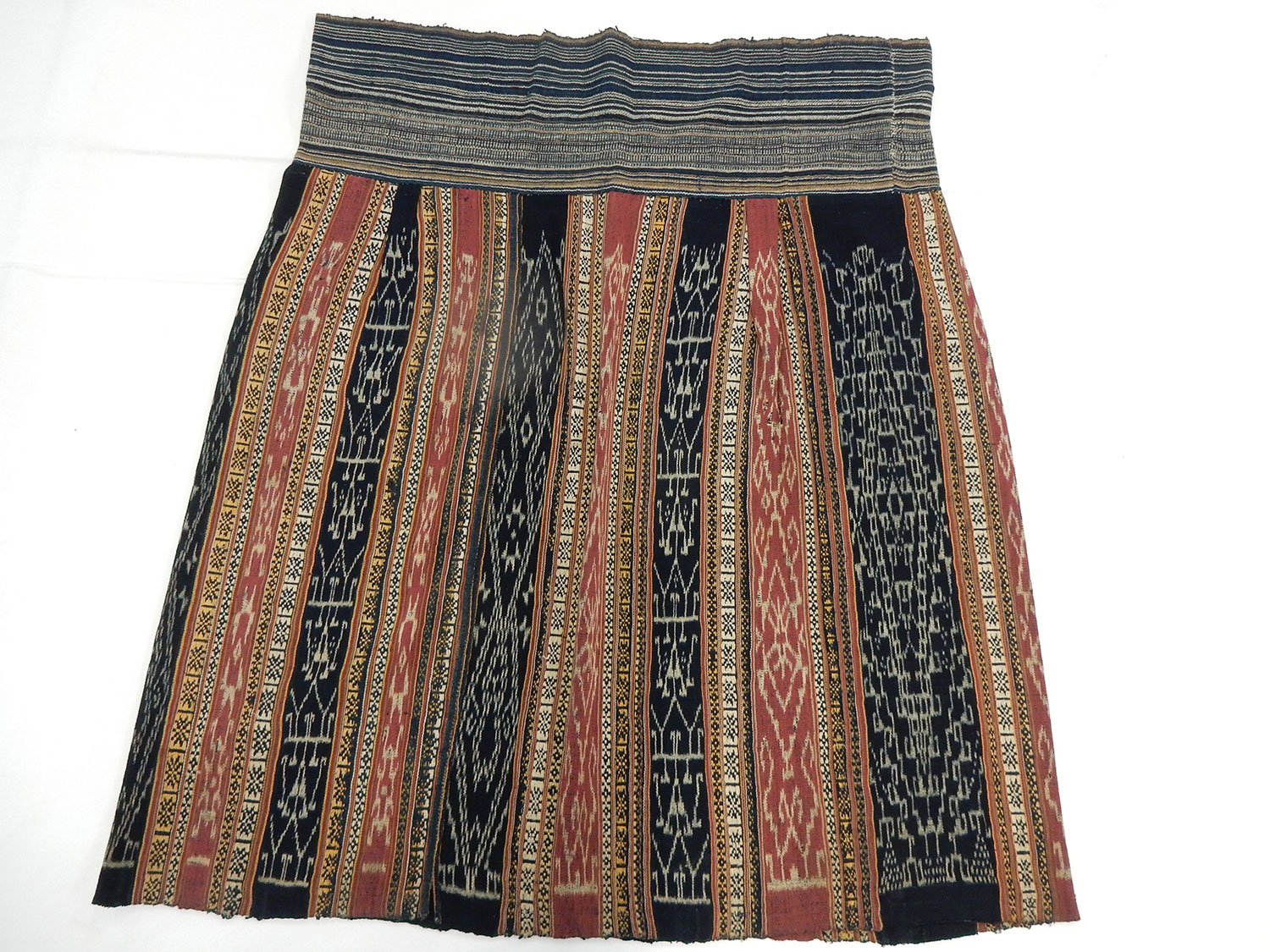
Through cataloguing May Wilson’s collection and undertaking comparative study and research, the collection has been contextualised within a wider South East Asian narrative of textiles – one in which textiles are literally the thread of social relations and networks.
On a personal level, the work placement has broadened my research interests in Asian textiles, an area that I am particularly interested in researching for my dissertation but have not covered through the courses on my degree programme, which have been largely focused on European textiles. It has therefore been enlightening and stimulating to be able to study something new and with such hands on experience.
Further reading
Conway, Susan. 1992. Thai Textiles, London: British Museum Press.
Fraser-Lu, Sylvia. 1990. Handwoven Textiles of South-East Asia, Oxford University Press: Australia and New Zealand.
Lewis, Paul and Elaine. 1984. Peoples of the Golden Triangle: Six Tribes in Thailand, London: Thames and Hudson Ltd.
Toyota, Mika. 2003. ‘Clothing and Courtship: Akha Clothing in Social Context’, in Dell, Elizabeth and Dudley, Sandra. Textiles from Burma: featuring the James Henry Green collection. London: Philip Wilson Publishers in association with the James Green Centre for World Art.
